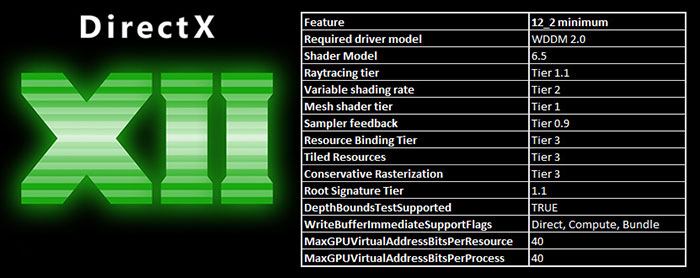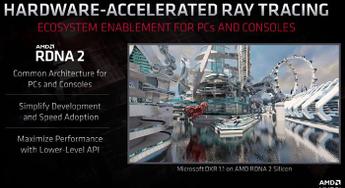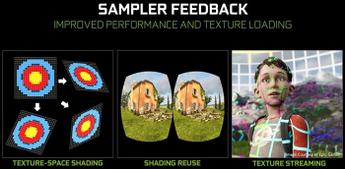Microsoft has posted a new entry on its developers' blog about the introduction of DirectX 12 feature level 12_2. Before going on to describe what level 12_2 brings to the table, it refreshes readers on what feature levels are, and why new feature levels are good. In brief, the feature levels provide reference points to hardware capabilities, so they allow streamlining of application code. Importantly successive feature levels are supersets of those that have come before, so feature level 12_2 includes all the capabilities of 12_1 and all that came before.
A quartet of 'big ticket' additions debut in DirectX 12 feature level 12_2, which Microsoft calls "huge". Whether that is the case I will leave to your judgement but you will indeed see a bit of graphical buzz word bingo below:
- DirectX raytracing
- Mesh shaders
- Variable rate shading
- Sampler feedback
The above by no means the only new features in this update and you can check out the dev blog for listings of other new features and links to dig further into each, with feature specs available too.

A useful FAQ is tacked onto the end of Microsoft's blog that highlights a number of important things. First of all it is noted that feature level 12_2 is exclusive to Direct3D 12. While its predecessor worked with Direct3D 11 this isn't possible with the new level due to the 'big-ticket' additions.
 |
 |
You may be wondering what existing / future graphics cards support feature level 12_2? Microsoft makes the support clear in the bullet points reproduced below - and even Qualcomm Snapdragon platforms will support it in the future.
- Feature level 12_2 is supported on Nvidia GeForce RTX and Quadro RTX GPUs.
- AMD’s upcoming RDNA 2 architecture based GPUs will include full feature level 12_2 support.
- Intel’s roadmap includes discrete GPUs that will empower developers to take full advantage of Feature Level 12_2.
- Microsoft is collaborating with Qualcomm to bring the benefits of DirectX feature level 12_2 to Snapdragon platforms.
Of the above only the green team's wares support feature level 12_2 and are currently available for users to purchase.













